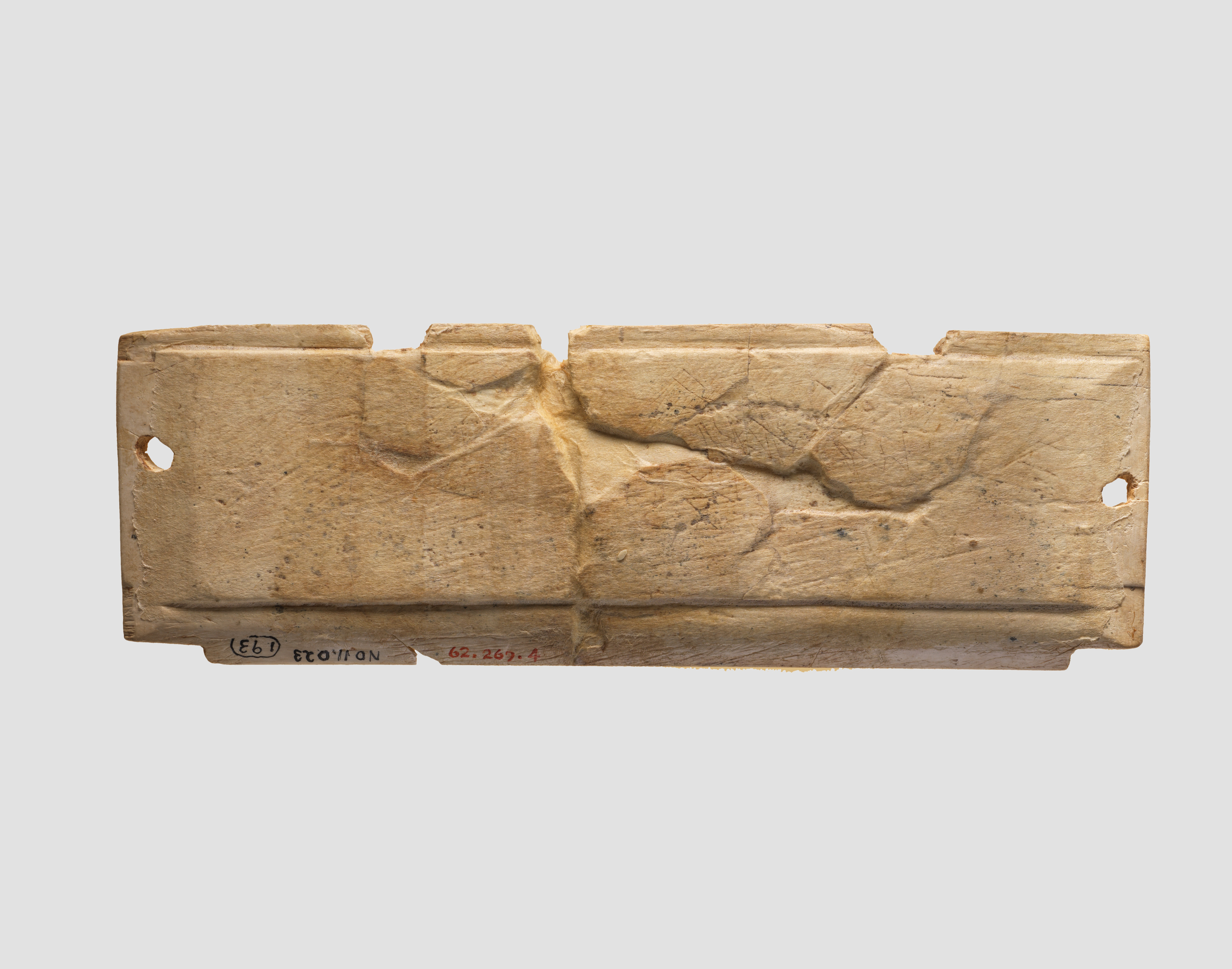Cloisonné furniture plaque with two sphinxes flanking a cartouche
Not on view
This rectangular plaque depicts two sphinxes flanking a central cartouche crowned by a solar disc and ostrich plumes. It was found in a large storeroom at Fort Shalmaneser, a royal building at Nimrud that was probably used to store tribute and booty collected by the Assyrians while on military campaign. Two tenons projecting from the shorter sides suggest that this piece was originally fitted into a frame, likely as part of a piece of furniture. The tenons are pierced by drilled holes for dowels that would have aided in securing the ivory to a frame. The piece is decorated in the cloisonné inlay technique, in which cloisons—walled cells—are cut into the surface and fitted with inlays of colored glass or semiprecious stones. None of the inlays have survived, in spite of the extensive cloisonné decoration on the upper and lower frames, the sphinxes’ hair, eyes, sidelocks, wesekh broad collars with pendant droplets, and hanging aprons. This plaque has been attributed to the Phoenician style, expressed by the slender leonine bodies of the sphinxes, the Egyptianizing cartouche, and the cloisonné inlay technique.
Built by the Assyrian king Ashurnasirpal II, the palaces and storerooms of Nimrud housed thousands of pieces of carved ivory. Most of the ivories served as furniture inlays or small precious objects such as boxes. While some of them were carved in the same style as the large Assyrian reliefs lining the walls of the Northwest Palace, the majority of the ivories display images and styles related to the arts of North Syria and the Phoenician city-states. Phoenician style ivories are distinguished by their use of imagery related to Egyptian art, such as sphinxes and figures wearing pharaonic crowns, and the use of elaborate carving techniques such as openwork and colored glass inlay. North Syrian style ivories tend to depict stockier figures in more dynamic compositions, carved as solid plaques with fewer added decorative elements. However, some pieces do not fit easily into any of these three styles. Most of the ivories were probably collected by the Assyrian kings as tribute from vassal states, and as booty from conquered enemies, while some may have been manufactured in workshops at Nimrud. The ivory tusks that provided the raw material for these objects were almost certainly from African elephants, imported from lands south of Egypt, although elephants did inhabit several river valleys in Syria until they were hunted to extinction by the end of the eighth century B.C.
This image cannot be enlarged, viewed at full screen, or downloaded.
This artwork is meant to be viewed from right to left. Scroll left to view more.



